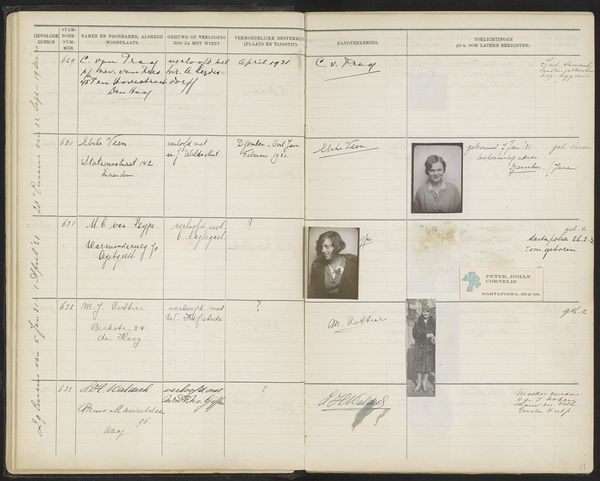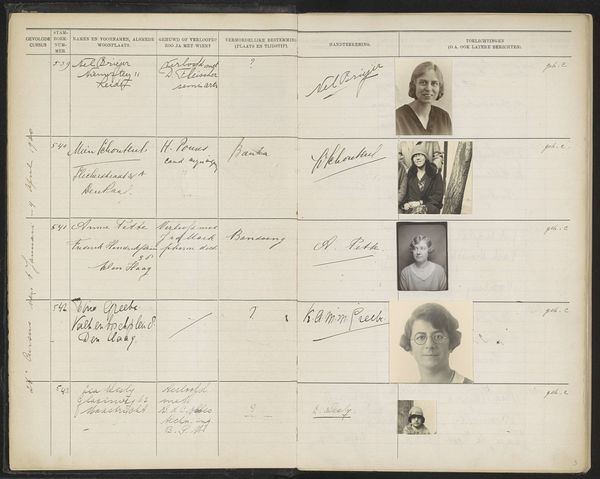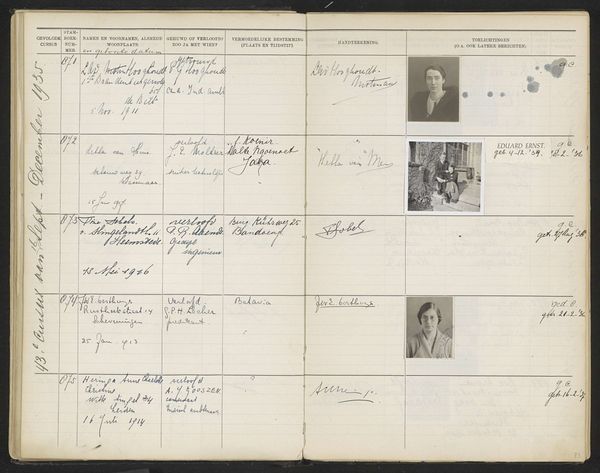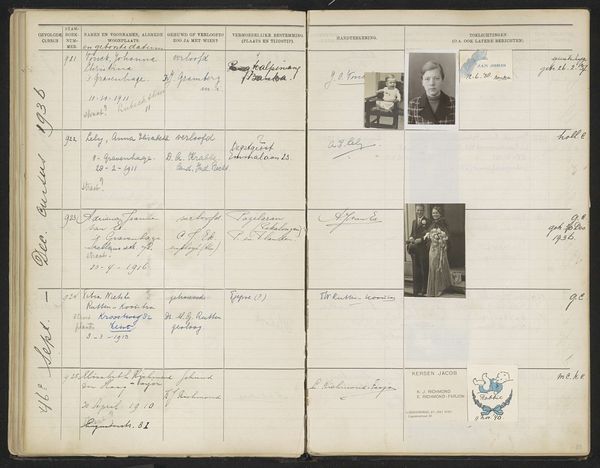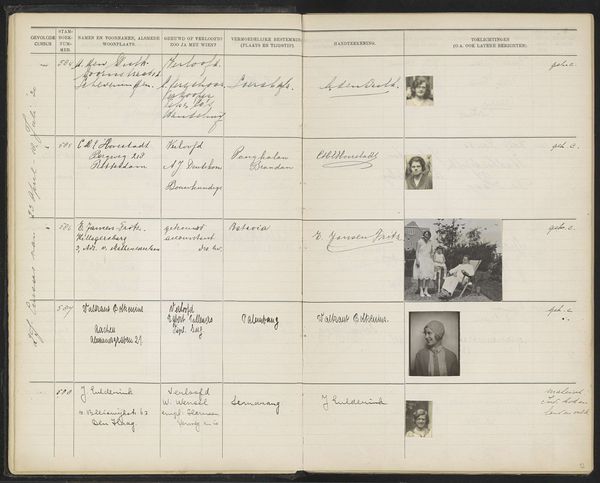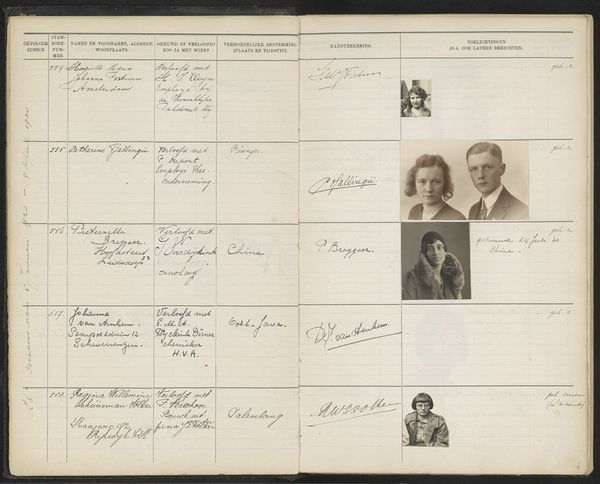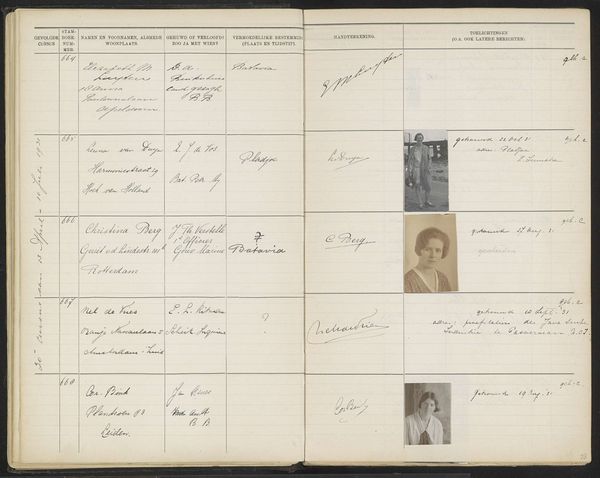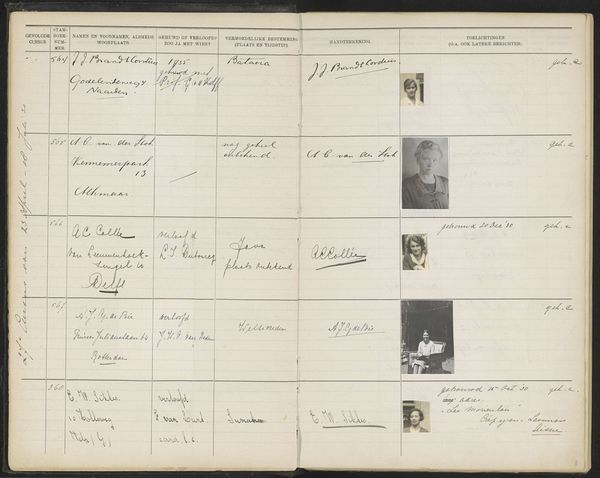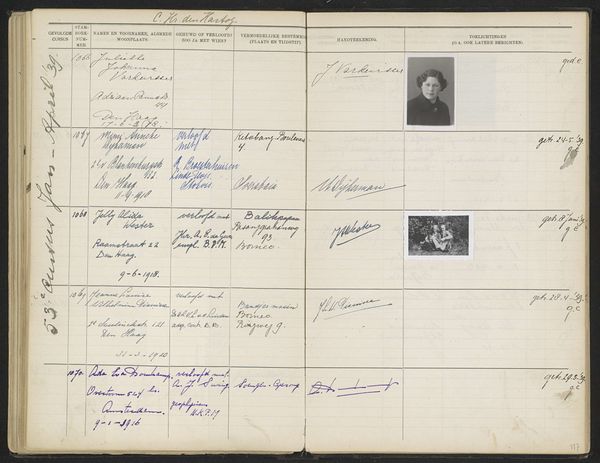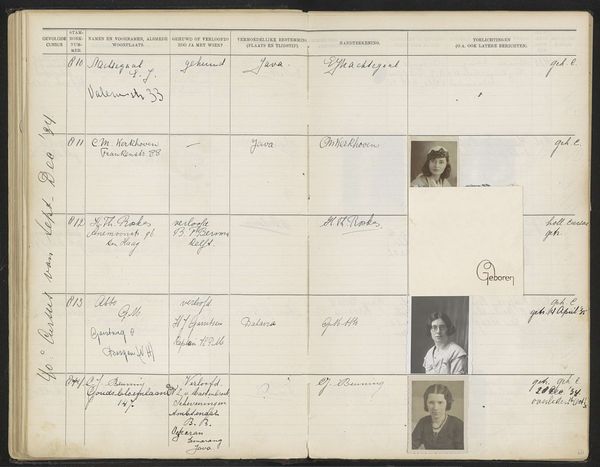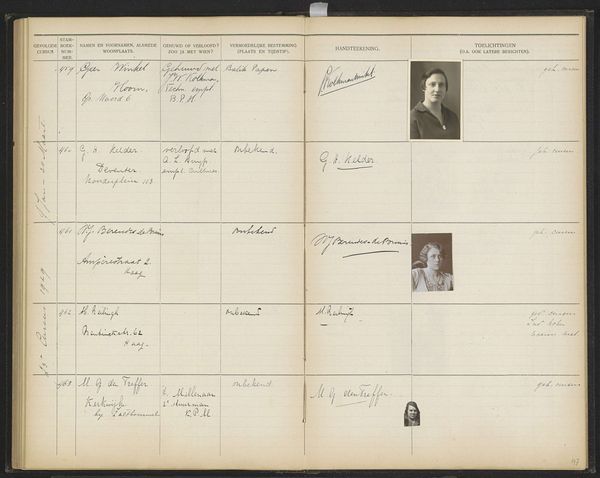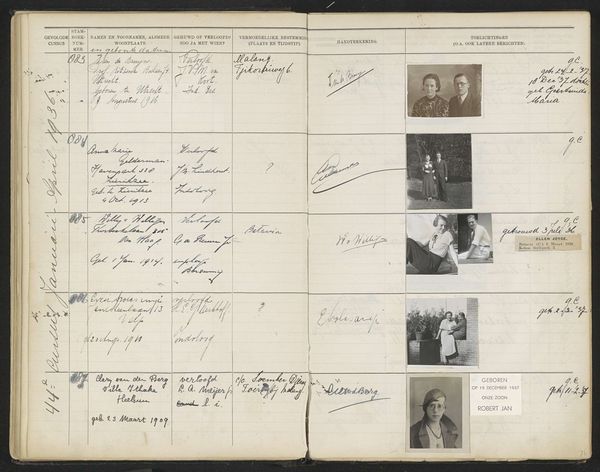
Blad 4 uit Stamboek van de leerlingen der Koloniale School voor Meisjes en Vrouwen te 's-Gravenhage deel II (1930-1949) Possibly 1930 - 1936
0:00
0:00
drawing, mixed-media, collage, print, paper, photography, ink
#
portrait
#
drawing
#
aged paper
#
mixed-media
#
collage
# print
#
sketch book
#
hand drawn type
#
paper
#
photography
#
personal sketchbook
#
ink
#
ink drawing experimentation
#
pen-ink sketch
#
pen work
#
sketchbook drawing
#
storyboard and sketchbook work
#
sketchbook art
Dimensions: height 337 mm, width 435 mm
Copyright: Rijks Museum: Open Domain
Curator: We're looking at page 4 from "Stamboek van de leerlingen der Koloniale School voor Meisjes en Vrouwen te 's-Gravenhage deel II (1930-1949)," a mixed-media piece including drawings, collage, photography, and print. Its precise date of creation remains a question, but we believe it's from around 1930 to 1936. Editor: It feels so personal, yet institutional. The tight rows of handwritten text juxtaposed with those stiff, posed photographs. It's quite melancholy. Curator: This colonial school held a particular, fraught position within the Netherlands and its colonies. The album's purpose was multifaceted: to record students' identities, their family information, and their placement after graduation, likely determining their futures within the colonial apparatus. Editor: So it’s a snapshot of a very specific social structure and the women who were being prepared to uphold it. I notice how their individual identities—evident in their portraits—are reduced to mere entries, serving a larger administrative function. Is it a critique or reflection of its colonial implications? Curator: It invites that question, certainly. Each face represents a woman about to enter a system that inherently involved power dynamics of race, class, and gender. This album is then both an archive and a testament of an unequal society. We have glimpses into personal histories interwoven with larger forces shaping colonial Dutch society. The juxtaposition really strikes me, don’t you think? Editor: Absolutely. Each photograph is a small act of resistance, a reminder of the individual humanity embedded within such a vast project. Considering this "Stamboek’s" bureaucratic design, one starts to think about what it hides, those stories the archive couldn't or wouldn’t register, about ambition, or resistance, maybe even discontentment. Curator: That’s such a keen insight! It reminds us to constantly question the narratives archives present and search for those absent voices, filling the inevitable gaps. The very existence of this ledger provokes dialogues about the individuals who contributed to it. Editor: Looking closely transforms administrative data into intimate stories, encouraging reflections on intersectionality and the nuances inherent within power systems that influence society's very roots.
Comments
No comments
Be the first to comment and join the conversation on the ultimate creative platform.
